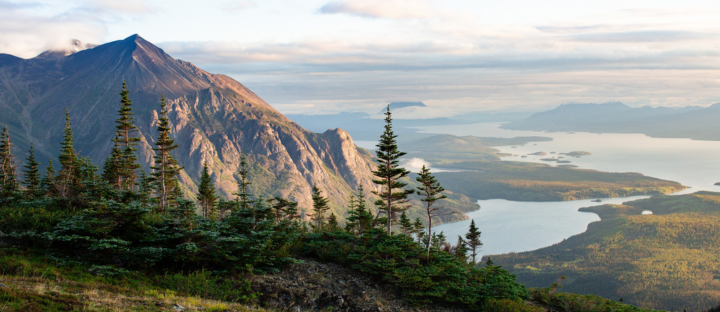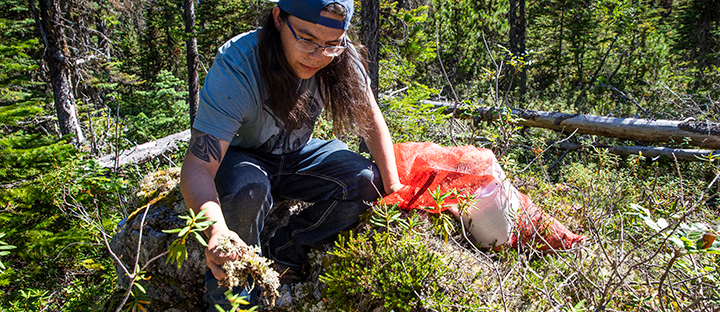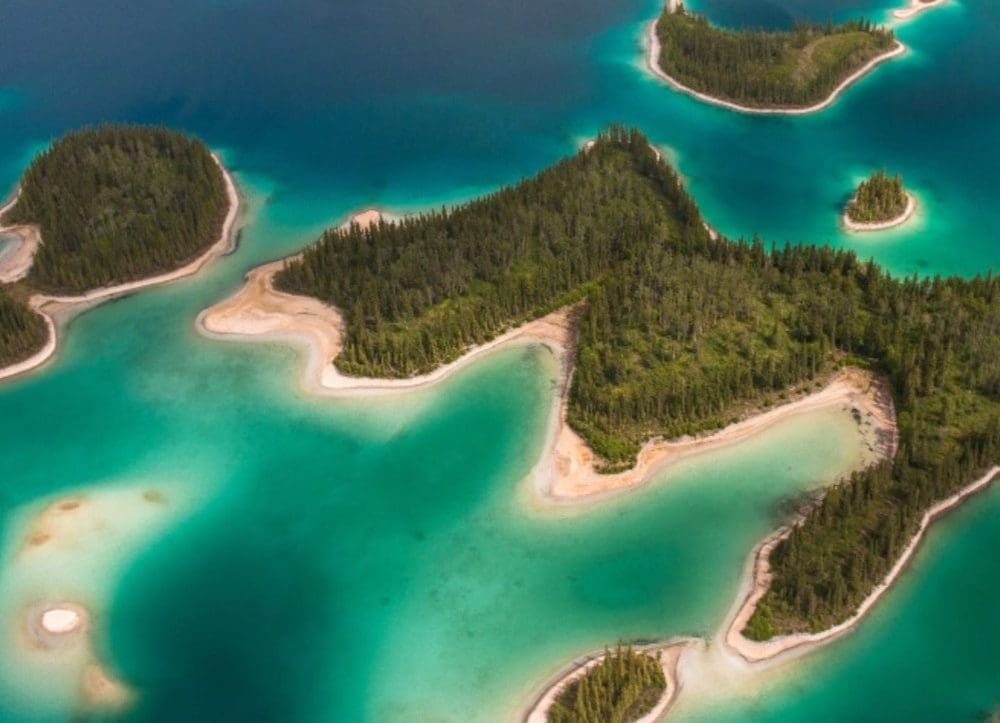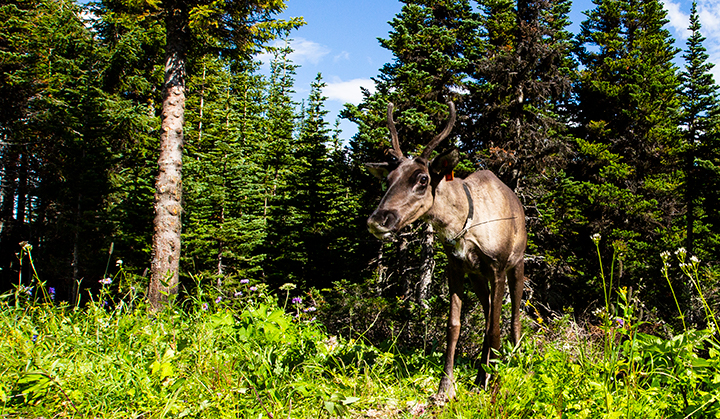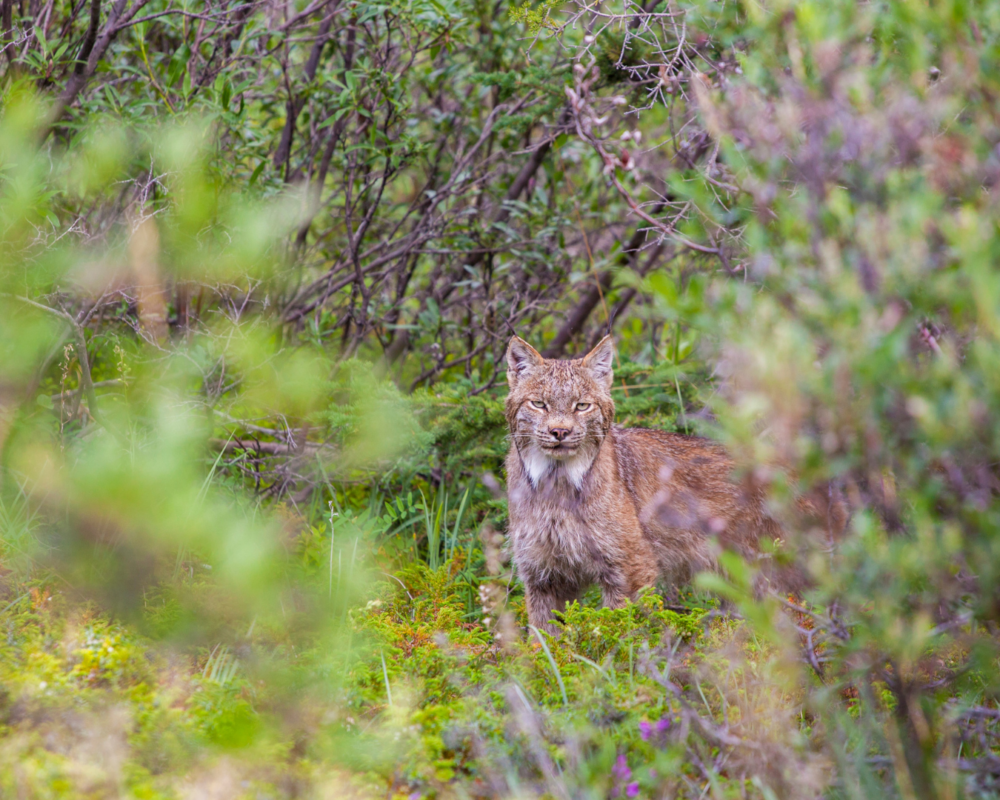What are the benefits of Indigenous Protected and Conserved Areas and other Indigenous-led protected areas and why are they a focus for protecting lands and waters in the Yellowstone to Yukon region?
The rights of Indigenous Peoples to their territorial lands and relationships with nature, as well as their role in conservation, are gaining recognition globally. In Canada, this includes establishing new Indigenous Protected and Conserved Areas (IPCAs).
IPCAs and other Indigenous-led protected areas are a powerful expression of Indigenous rights and play a crucial role in protecting nature on a large scale, including in the Yellowstone to Yukon region.
What are IPCAs & why do they matter?
Indigenous Protected and Conserved Areas, or IPCAs, are clearly defined protected areas that can include both lands and waters governed by First Nations, Métis, and Inuit in partnership with provincial, territorial or federal governments.
For many Indigenous Peoples, connection to the land is a long-established reciprocal relationship. The benefits of Indigenous-led protected lands and waters, including IPCAs, go beyond conservation, to include cultural reciprocity and ancestral ties.
IPCAs and other Indigenous-led protected areas provide many economic, socio-cultural, and ecological benefits for people regardless of background.
Learning about and understanding these benefits not only helps us continue down the path of Truth and Reconciliation, but also helps create a strong plan for the protection of our shared planet — one in which we can all work on together.
In a May 2023 report titled ‘The Economic, Socio-Cultural, and Ecological Benefits of Indigenous Protected and Conserved Areas’ compiled by Y2Y, we review the key benefits of IPCAs. This includes showcasing examples where Indigenous Peoples are taking the lead, and ways non-Indigenous people can contribute to and be part of this work.
We encourage you to read the full report, share it, and follow through by expressing your support for IPCAs and Indigenous-led conservation to decision-makers where you live.
At a glance: Benefits of Indigenous Protected and Conserved Areas
IPCAs contribute to strong economies and thriving communities
Sustainable and strong economies are a critical foundation for healthy, vibrant communities, which in turn support nature conservation.
As a form of regional economic development, IPCAs are a sound investment that create jobs, such as through Indigenous Guardian programs; generate economic growth, including through tourism and carbon financing; and establish industry certainty through collaborative land-use planning.

Examples in action
- Protecting the Great Bear Rainforest has created 1,000+ permanent jobs and the establishment or growth of 100+ local businesses.
- As of 2023, there are a total of 120 Guardian programs operating across Canada.
- Indigenous-led tourism is a significant source of economic growth in Canada, contributing $1.9 billion in GDP in 2019.
IPCAs provide significant social and cultural benefits for many people.
The well-being of people and nature is deeply interconnected.
Evidence from around the globe shows support for Indigenous-led conservation, including IPCAs, and has significant social and cultural benefits for Indigenous peoples and non-Indigenous people visiting or living in an area.
These socio-cultural benefits include the revival of Indigenous cultures, educational and training opportunities such as land-based learning, benefits to human health and well-being by protecting caribou, moose, buffalo and other culturally significant wildlife species, strengthening food sovereignty, and the renewal of land-based relationships.

Examples in action
- IPCAs and the land-based opportunities they provide help facilitate intergenerational knowledge transfer between Indigenous elders and youth.
- Revitalizing cultural land practices is crucial for protecting both Indigenous languages and the environment.
- Indigenous-led species restoration has cultural, spiritual and psychological benefits for those involved in restoration and the broader community.
IPCAs sustain healthy ecosystems for generations to come.
In the face of climate change and biodiversity loss, we need to focus on the solutions that connect and protect landscapes. IPCAs, co-managed and co-governed by Indigenous Peoples, are one of those solutions for stewarding and maintaining healthy, intact ecosystems.
More specifically, there are a variety of ecological benefits of IPCAs observed at both local and global scales, including the monitoring and restoration of animals and plants; protected and connected lands; and climate change adaptation and resilience.

Examples in action
- In British Columbia (B.C.) on West Moberly First Nations and Saulteau First Nations territory, Indigenous Guardians led recovery of the Klinse-Za caribou herd, which has grown from 38 in 2013 to more than 200 in 2023.
- After a 70 percent decline in the moose population on the traditional territory of the Gitanyow Lax’yip from 2001-2007, moose monitoring by the Lax’yip Guardians has helped increased the moose population by 50 percent between 2011-2017.
- In northern B.C., within the traditional territory of the Kaska Dena, the proposed Dene K’éh Kusān IPCA would protect 40,000 square kilometers and provide connectivity to 14 adjacent provincial protected areas.
Supporting IPCAs will help governments achieve their goals and commitments to people and nature.
IPCAs support Indigenous leadership in conservation and align with government goals such as the United Nations Declaration on the Rights of Indigenous Peoples (UNDRIP), the 30 by 30 initiative, and nature-based solutions. They contribute to meeting these goals by fostering Indigenous stewardship and advancing conservation efforts.
How Y2Y supports Indigenous Peoples driving forward conservation
In the Yellowstone to Yukon region, a quarter of protected areas are managed or co-managed by Indigenous Peoples, with more to come. These agreements and declarations are key in achieving Y2Y’s mission to connect and protect habitat so people and nature thrive.
Y2Y is actively promoting Indigenous conservation initiatives that advance the Yellowstone to Yukon mission, spanning from assisting in establishing Indigenous-led protected areas to developing tools that facilitate ethical and effective engagement by decision-makers, and undertaking projects such as habitat restoration and species survival.
Knowledge and teachings passed down through generations guide deep connections among lands, waters, people and non-human beings. Indigenous understandings, practices and aspirations can be respected, supported, and learned from.
In the Yellowstone to Yukon region, a quarter of protected areas are managed or co-managed by Indigenous Peoples, with more to come. These agreements and declarations are key in achieving Y2Y’s mission to connect and protect habitat so people and nature thrive.
Importantly, Y2Y recognizes the history of protected areas in both Canada and the United States has included rights violations, displacement, loss of access to traditional territories, and other inter-generational impacts on Indigenous Peoples.
Part of Y2Y’s commitment to Truth and Reconciliation is to engage and support Indigenous governments, people, and organizations who share a goal to connect and protect lands and waters so that people and nature can thrive.
Y2Y is working to be a trusted ally in Indigenous-led conservation on projects that also support our vision. With many First Nations’ capacity stretched, and a lack of clear legal frameworks to create Indigenous Protected and Conserved Areas, non-Indigenous partners, including Y2Y, play crucial support roles.
Y2Y staff work to help build the political will, public awareness and support, and resources needed to ensure the protection of some of the most biodiverse landscapes in the region.
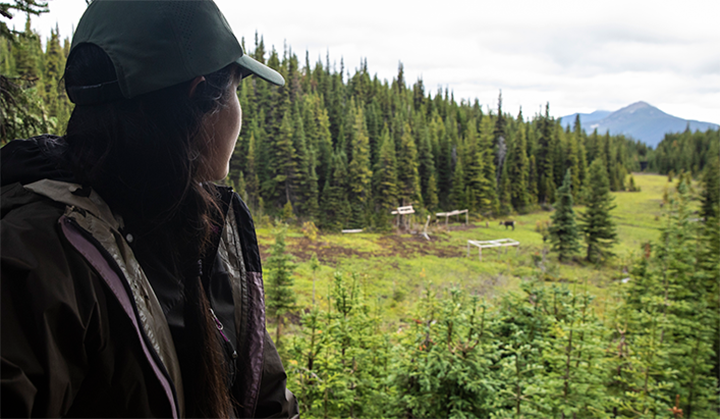
What’s next, and how you can help
The development of policies that include long-term funding for Indigenous-led conservation, including IPCAs, is critical for enduring conservation. Some decision-makers in provincial and federal governments are already taking steps to support Indigenous-led protected areas. However, there’s more work to do.
In British Columbia, we are recommending that the provincial government prioritizes the establishment of a mandate to advance IPCAs through a provincial nature agreement.
Y2Y is also recommending that the Government of Canada prioritize the establishment of a mandate to fully fund and advance IPCAs in agreements with Indigenous governments, provinces, and territories.
We also need you to support solutions — including Indigenous-led protected areas — that are important for conservation, communities, climate resilience, and more.
You are a vital part of the movement for connected and protected habitats. Here are a few ways you can support Indigenous-led conservation today:
- If you live in Canada, contact your local decision-makers and tell them you want to see a plan for working with Indigenous Peoples to establish Indigenous-led protected areas, including dedicated funding.
- Research and support other Indigenous-led conservation projects in your area.
- Donate to Y2Y to boost our work in supporting Indigenous-led initiatives in both Canada and the United States.
This project is made possible with funding from: Alberta Ecotrust Foundation, Real Estate Foundation of British Columbia, Sitka Foundation, and Mitsubishi Foundation Corporation for the Americas
Resources and additional reading
- Yellowstone to Yukon Conservation Initiative, May 2023 | The Economic, Socio-Cultural, and Ecological Benefits of Indigenous Protected and Conserved Areas in British Columbia
- IPCA Knowledge Basket
- The future of conservation in Canada depends on Indigenous protected areas. So what are they?
